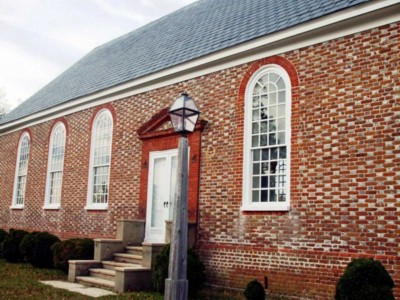
A Visit to the "Upper Parish Church of Stratton Major Parish"

* * *
Mr. Leonard Otto's father previously cared for the Churchyard; the job seems to be an inherited one. He enjoys learning more about the ancient families buried here. The Congregation is very small and is to be congratulated on maintaining a building as old as this one.
The Church formerly was entered from the side where the Johnson stones currently lie:
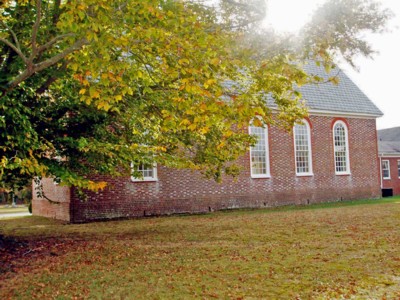
The Old Road, now a sort of driveway, once ran between the stones and this church building. Looking across both [cemetery] sections, the one where the Johnson stones are as well as the area adjacent to the current "front" side of the building, I'd say, based on the number of depressions, that there are many more stones in the churchyard still covered by two centuries of dirt.
This Church building is thought to be the second, if not the third structure to serve as the "Upper Parish Church of Stratton Major Parish." It is located in the present day King and Queen County, Virginia. However, Mr. Otto thinks this designation might err for there is another church a bit further north which is still in King & Queen County. He suspects the site of this other church building was originally the "upper parish church" for Stratton Major. However, this is the name given to this church in the 1980s archeological study done by Colonial Williamsburg. According to people I spoke with, (some were connected with the Colonial Williamsburg Foundation and others were Department heads at the College of William and Mary), the study was an attempt to locate the outer walls of the first and second churches. The present church sits very close to an earlier structure. During the excavation in the 1980s several tombstones were found in what might have been the interior of one of the previous church buildings, or perhaps they were against an exterior wall. One of the readable family surnames in this area was LITTLEPAGE.
The present church building was abandoned for a number of years. During this time the churchyard became overgrown with brambles and other new growth. It was finally purchased and restored by a Methodist congregation. The person hired by the congregation to clean up the yard brought in a bulldozer. In the process many stones were crushed, others badly broken. His final act was to push all the rubble into a large pile of dirt and brush. Parts of stones were reclaimed and attempts made to restore some. The biggest problem was matching one piece to another. Missing portions of a "complete" stone were filled with a substance that appears to be concrete:
About 1980 Malcolm Harris attempted to reconstruct and transcribe the Johnson stone. I, personally, was unable to make out anything in the bright glare of the sun on the stone: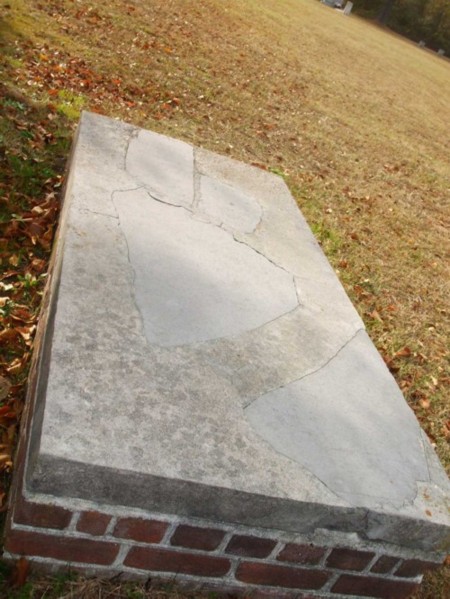
We returned, hoping the sunlight would be at a better angle another day. I've tried to change the lighting to improve legibility, but the etching in these pictures is as distinguishable as I can get using the latest version of Adobe Photoshop:
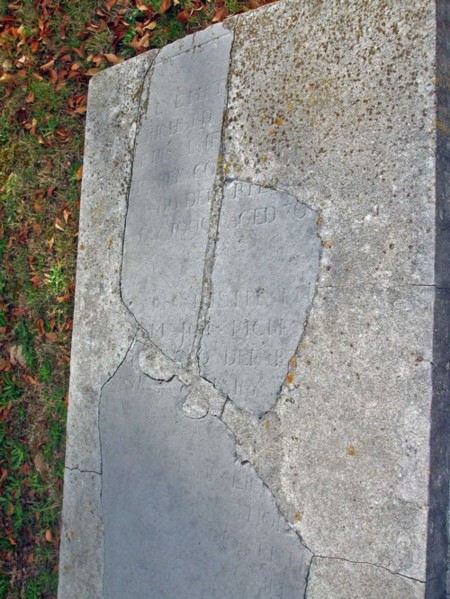
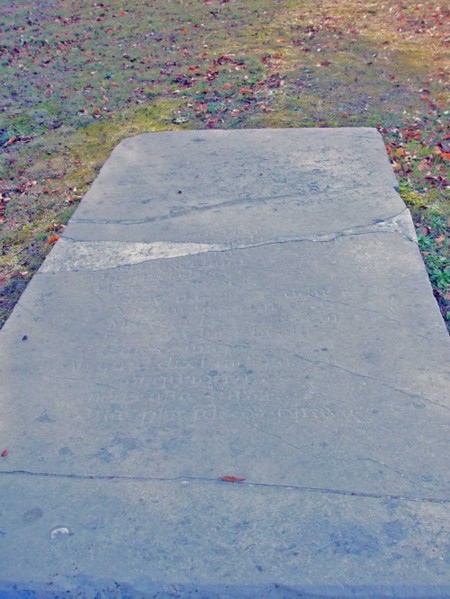
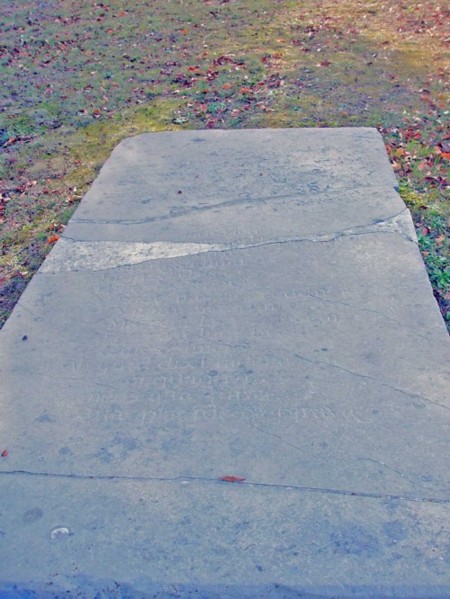
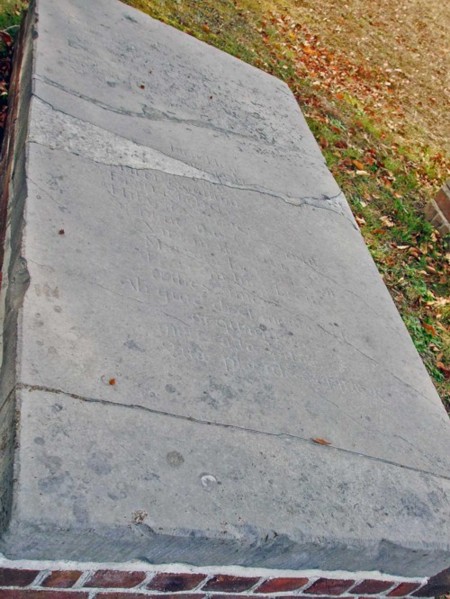
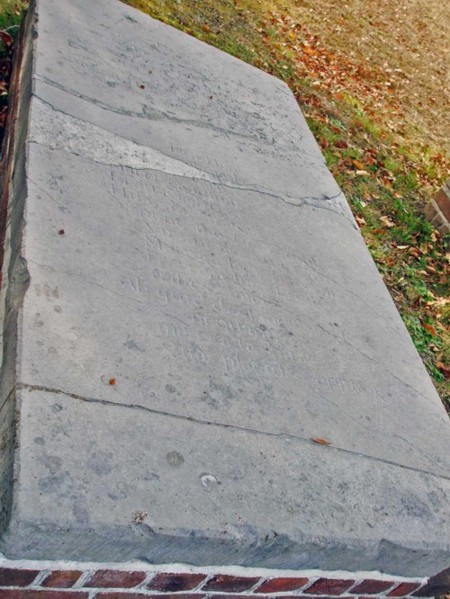
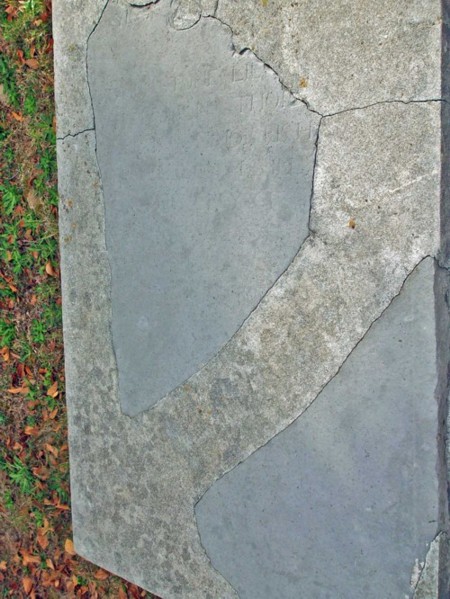
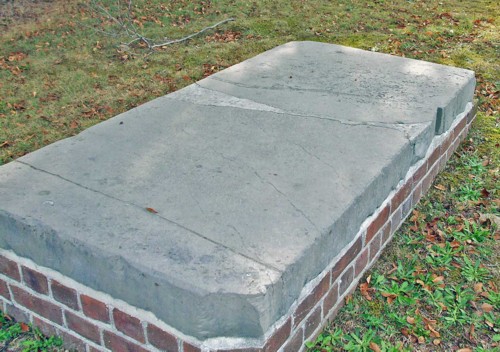
In my opinion most stones in the churchyard are illegible. Additionally, there is so much missing information I found what is there is almost useless. Certainly the words can be interpreted in several ways, which only leads to speculation. Like the stones in Bruton Parish, Warner Hall and Yorktown, stones in Virginia that date back this far have suffered severe weather damage. These have the added damage caused by the bulldozer.
Here is a photo of the frontice pictures from The Vestry Book of Stratton Major Parish --
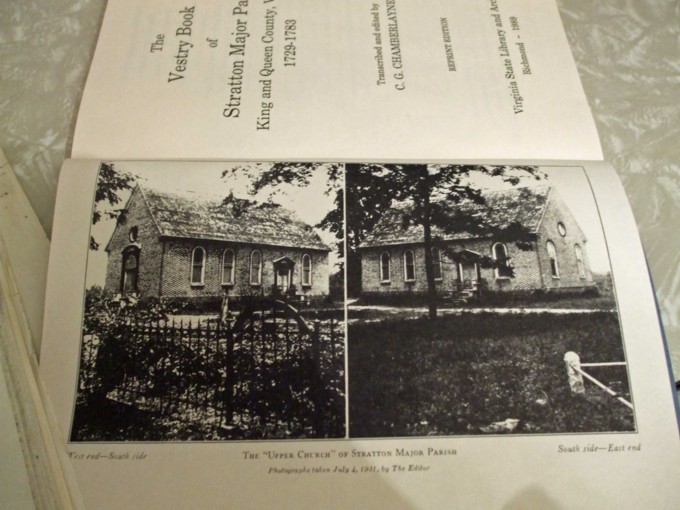
-- and part of a photo hanging on the wall dating from the 1920s, which shows the Church without the later addition:
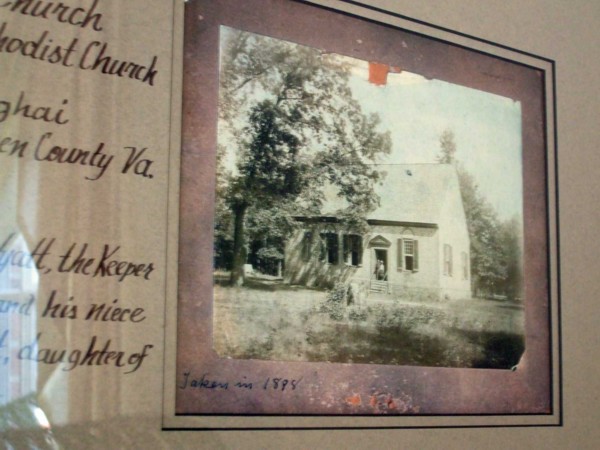
This parish church is a wonderful place to visit and the two members of the congregation we spoke with were wonderful to us. For a very rural congregation of only 43 families (I think that's what Mr. Otto said), they've done a great job. Contributions are always welcome. -- Karen Wood, January 2008
[Note: the church is at 26602 Tea Trl, Mattaponi, VA. Mail can be sent to: Old Church UMC, Route 14, Shanghai, VA 23110]